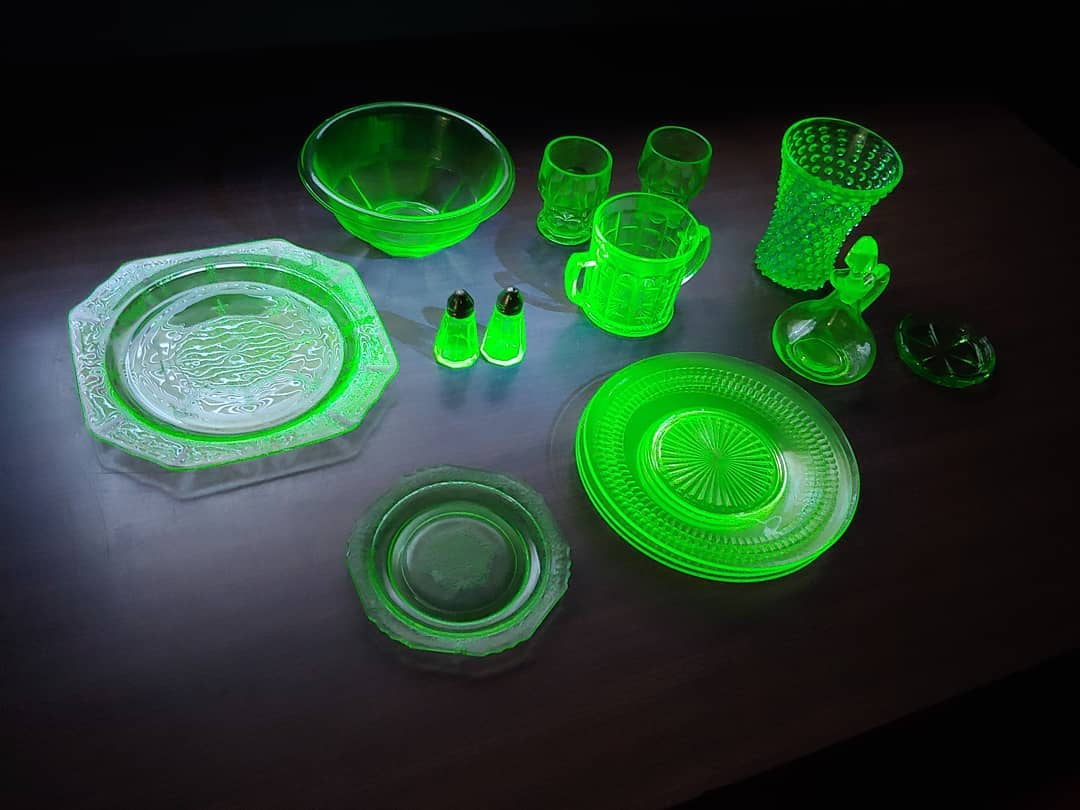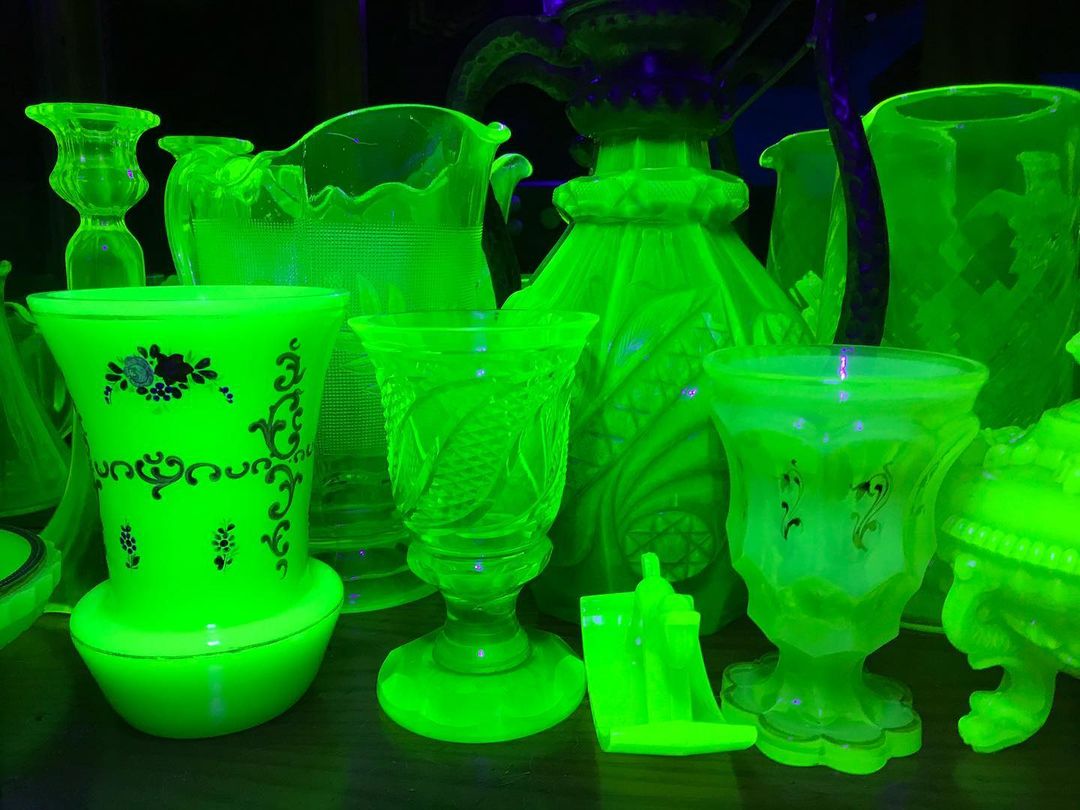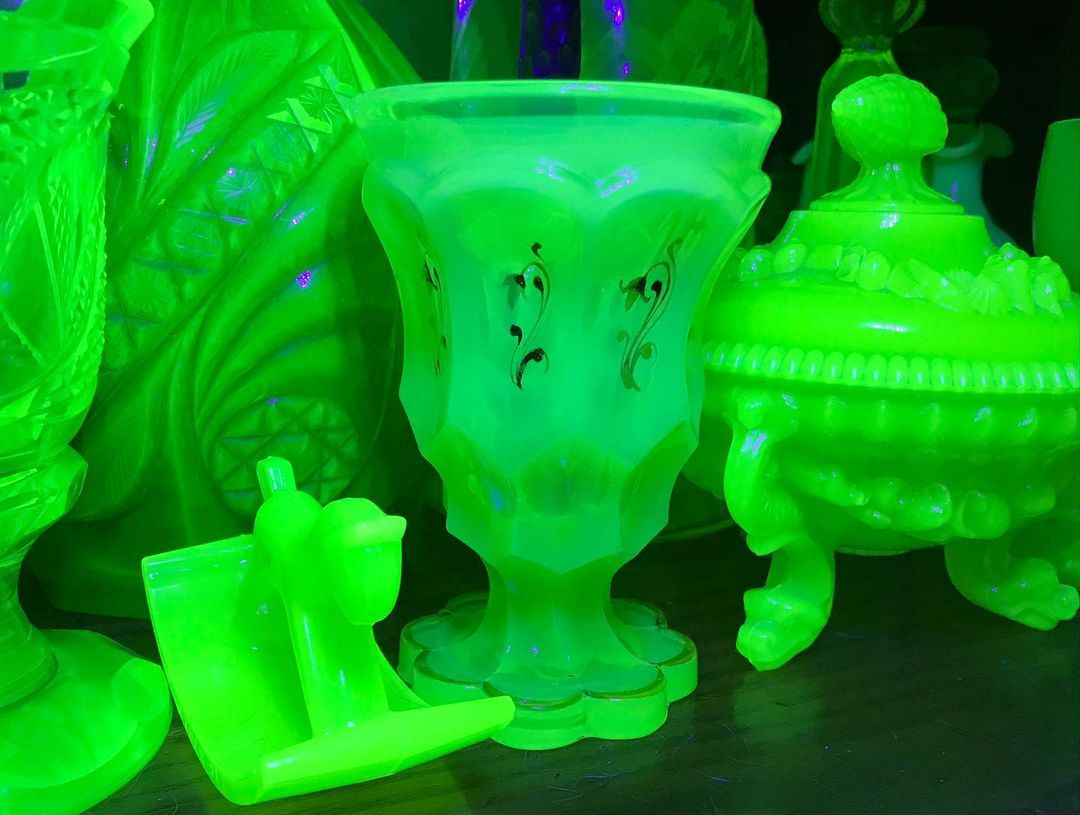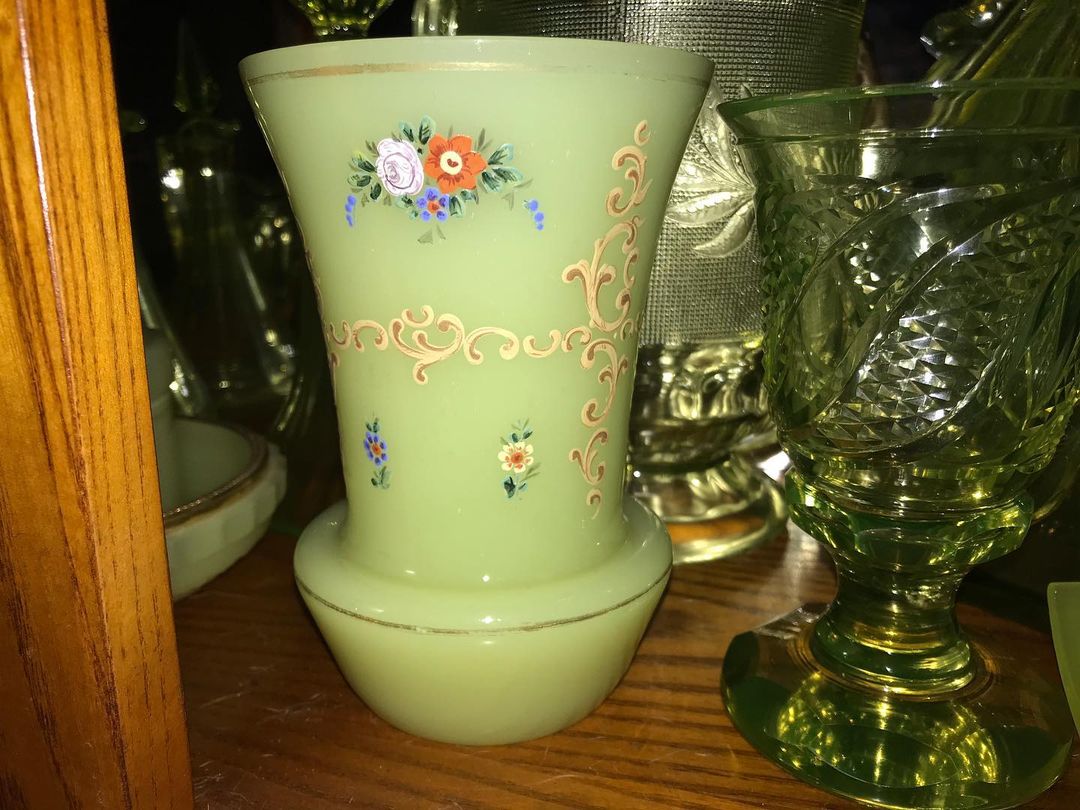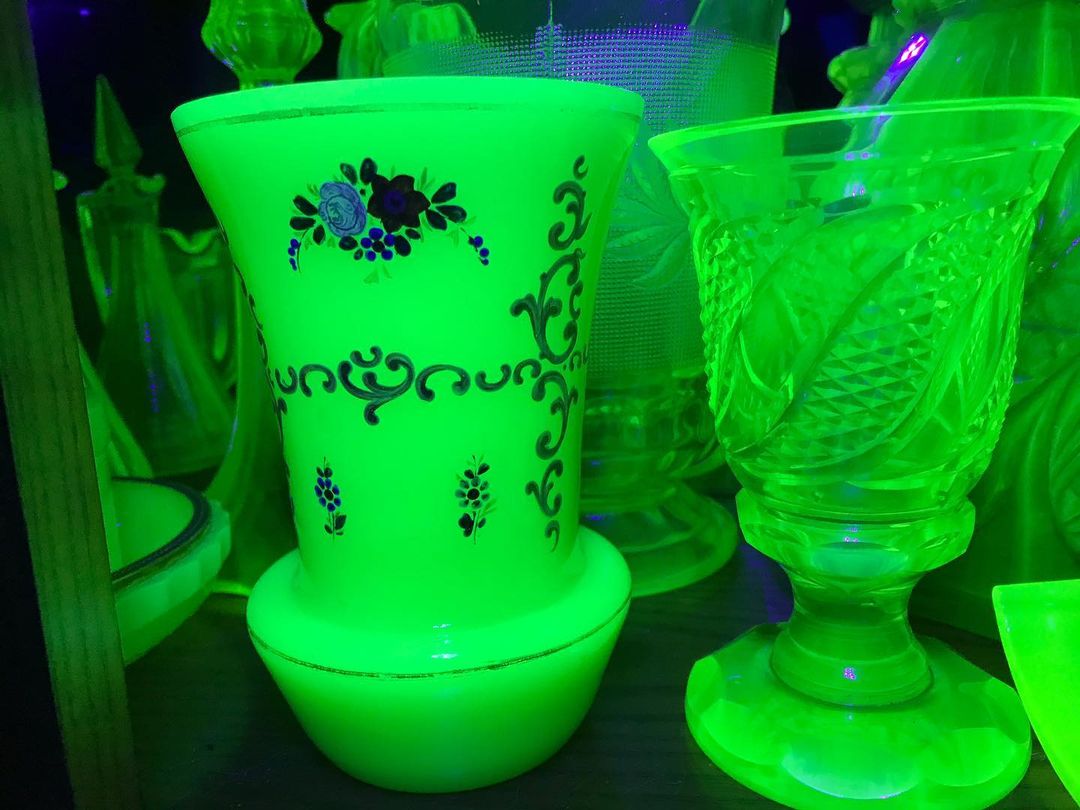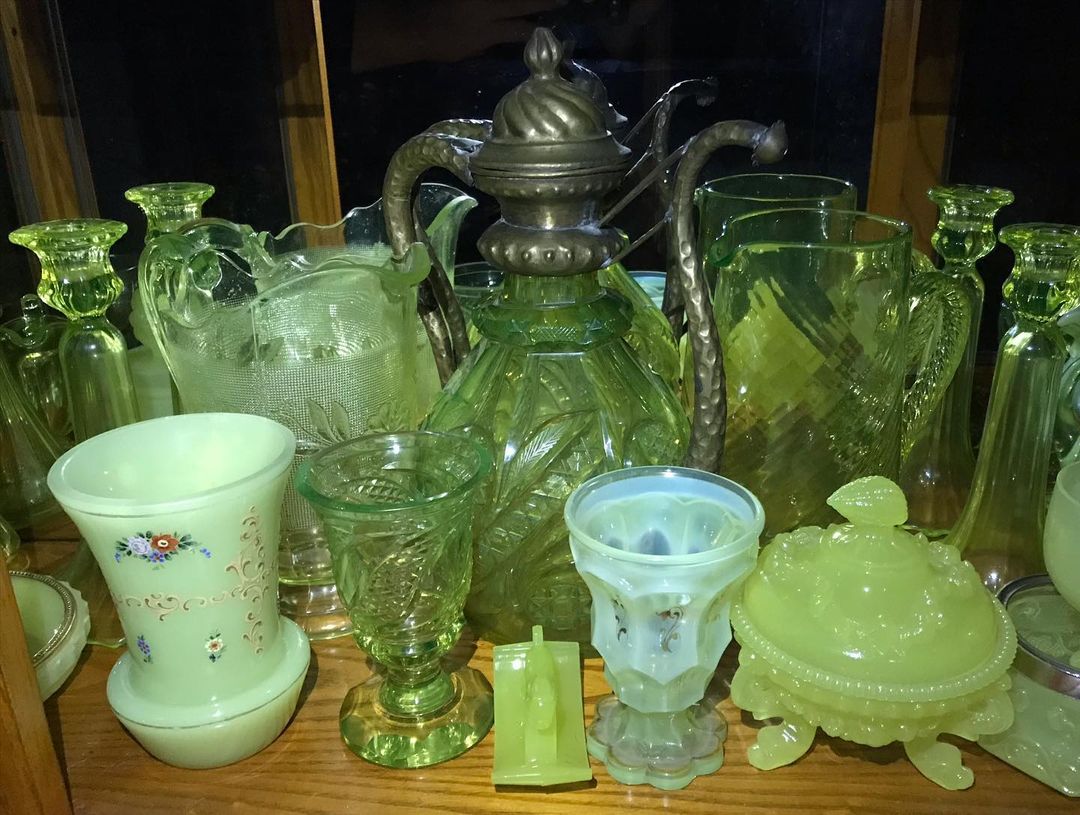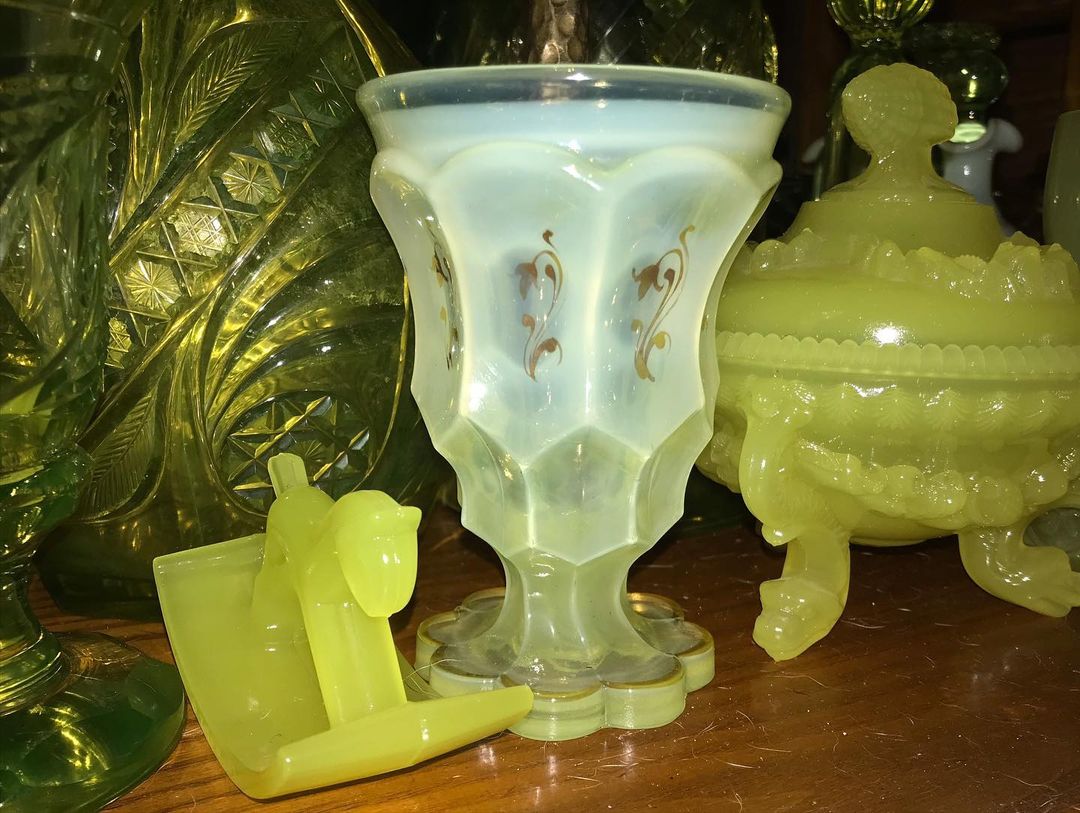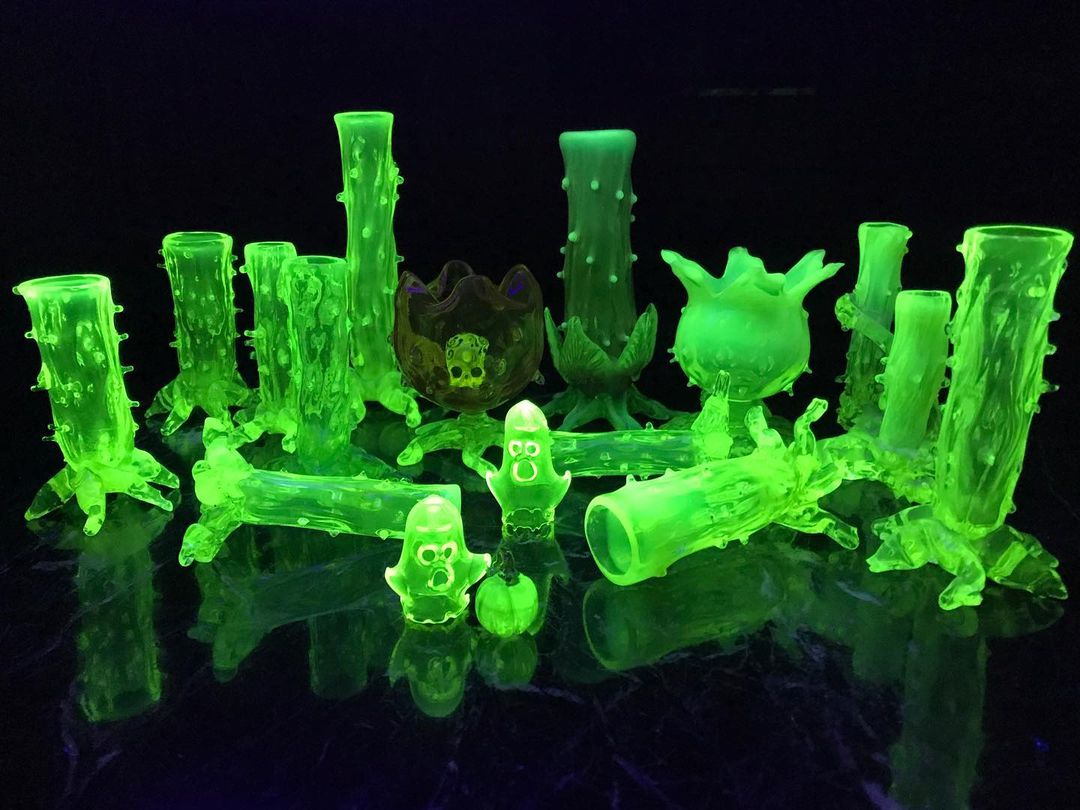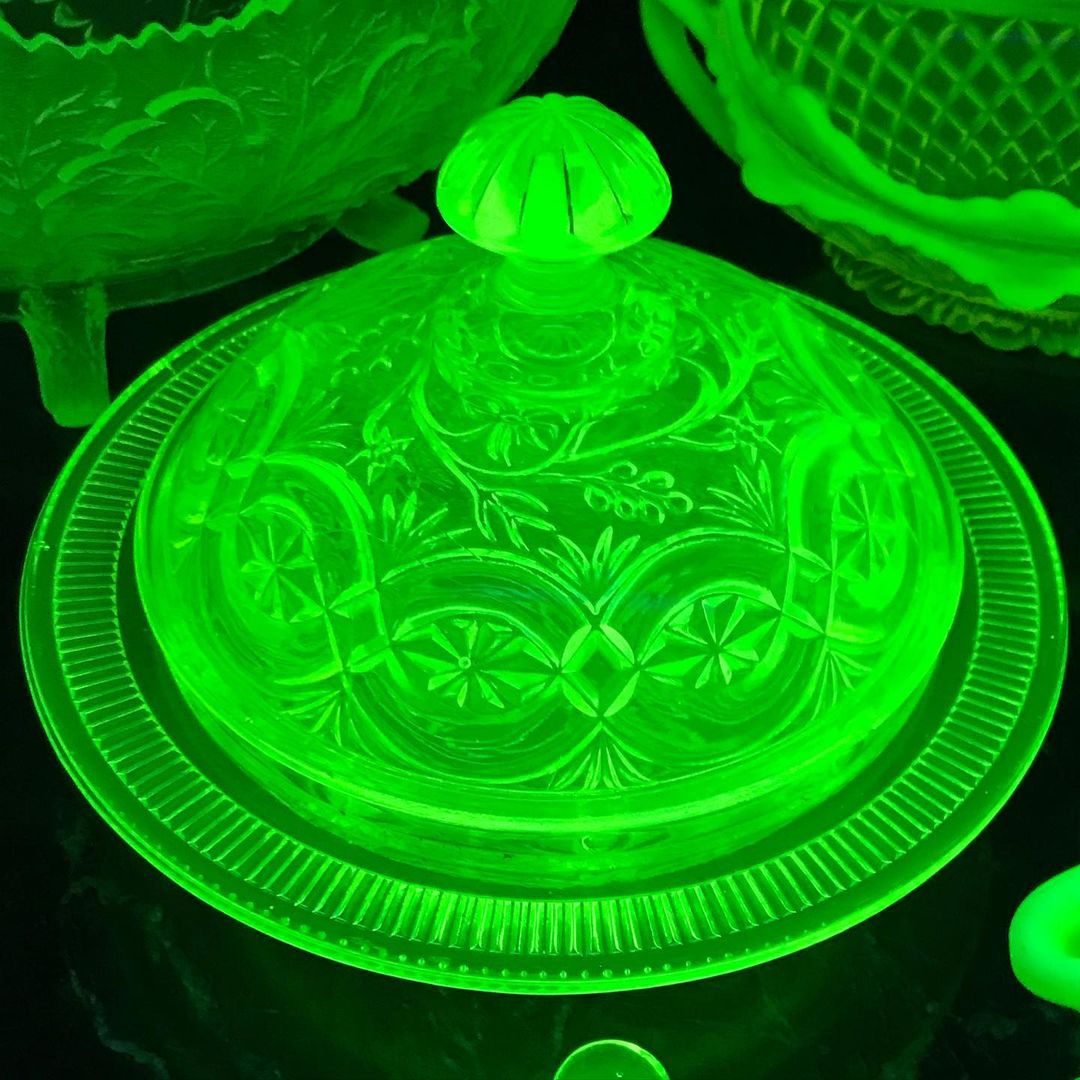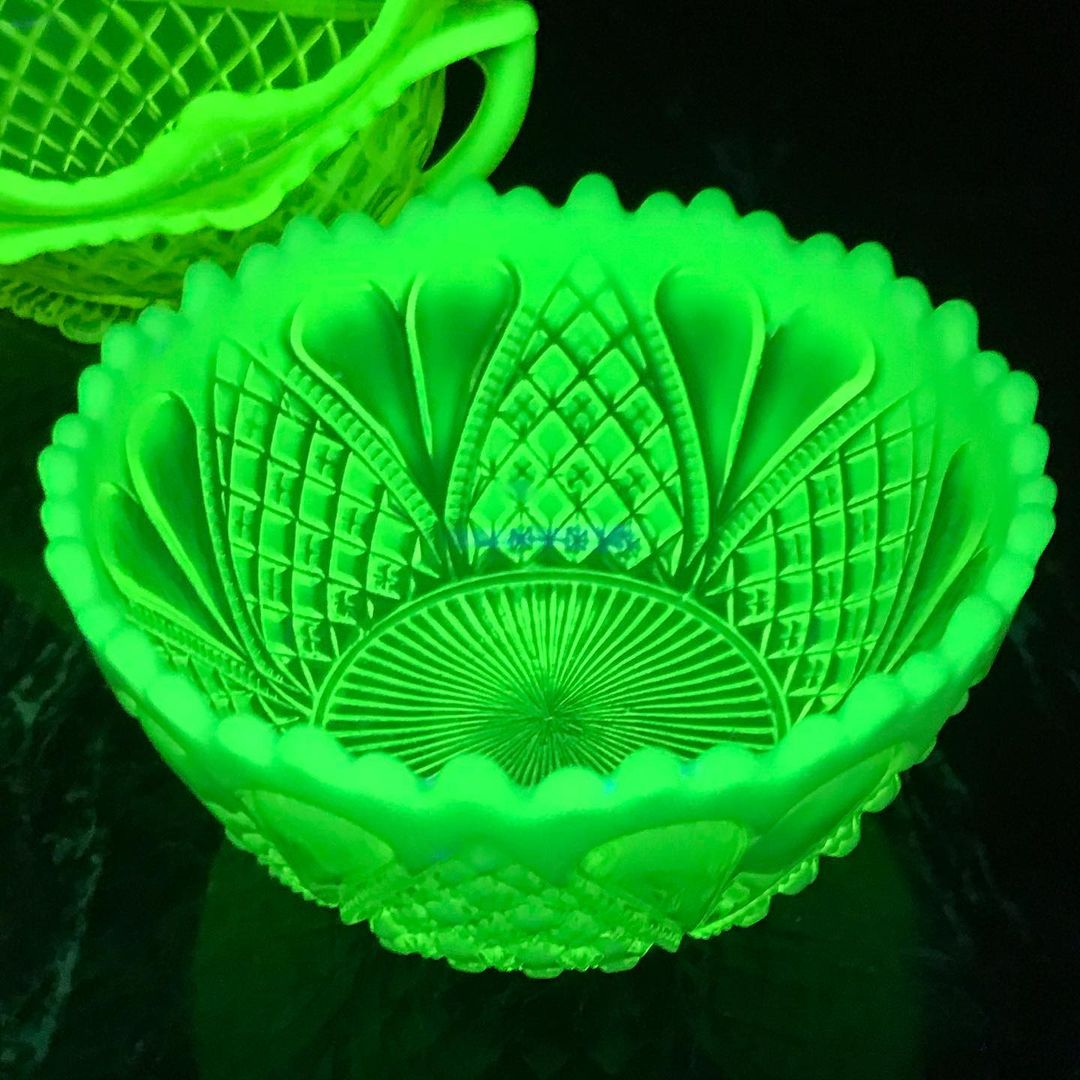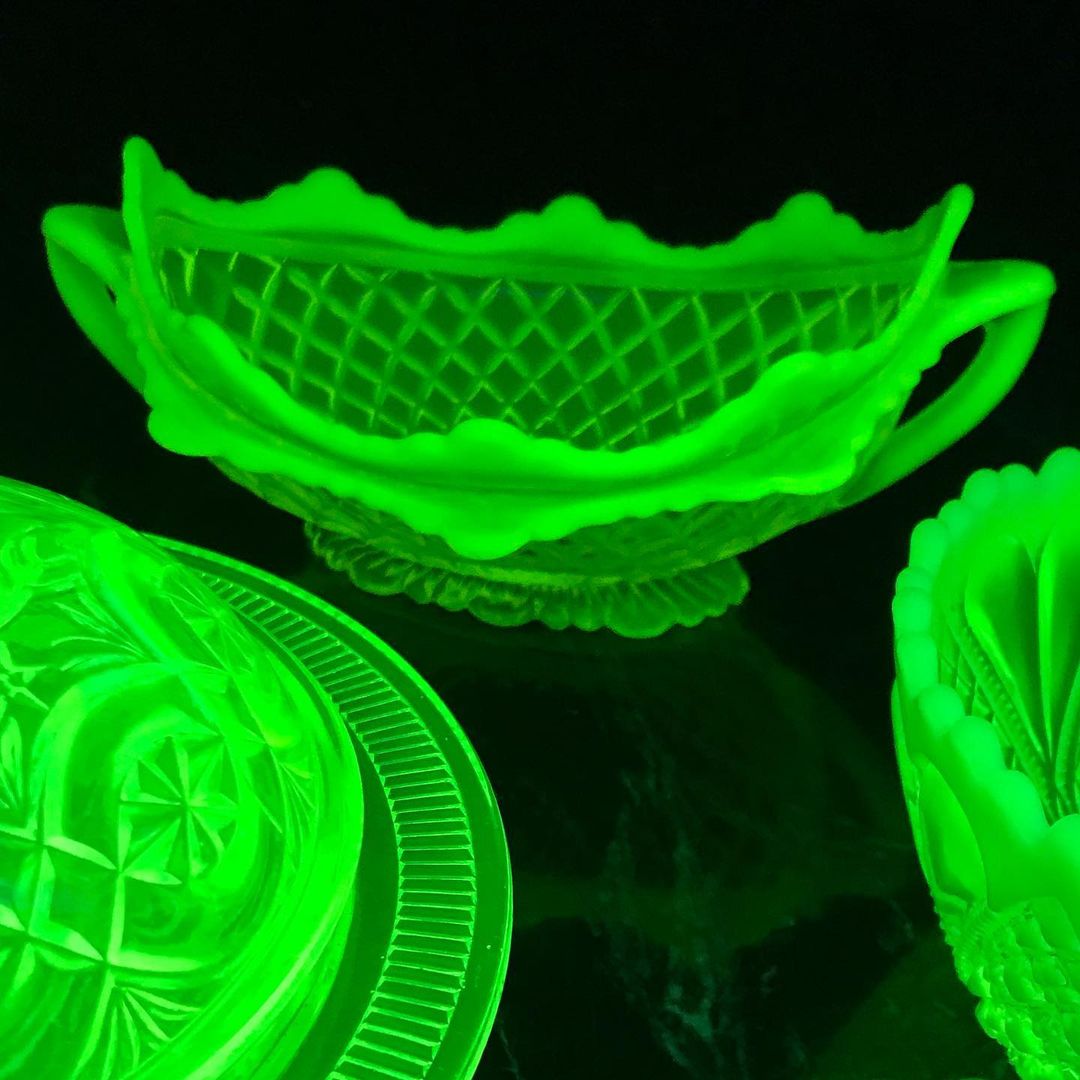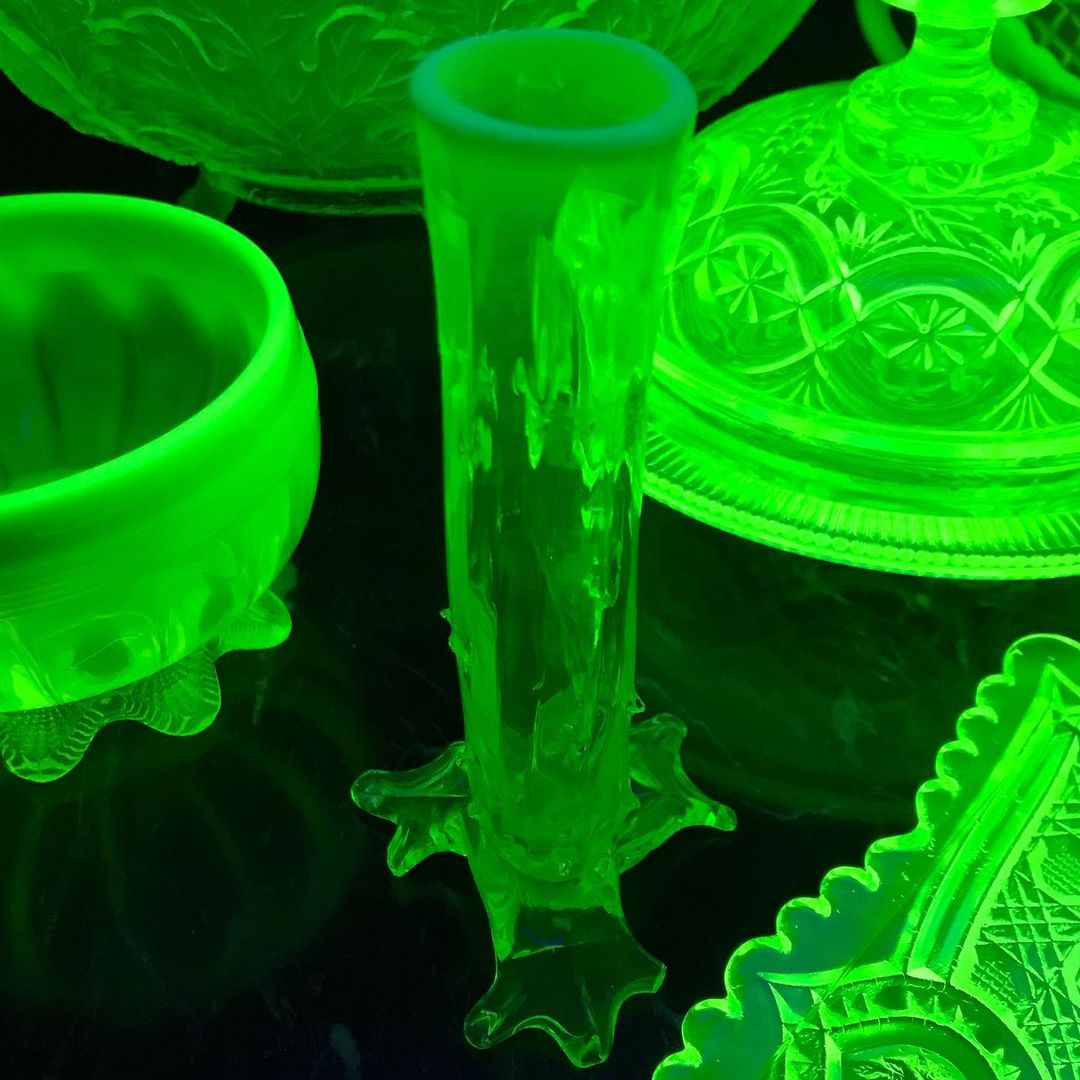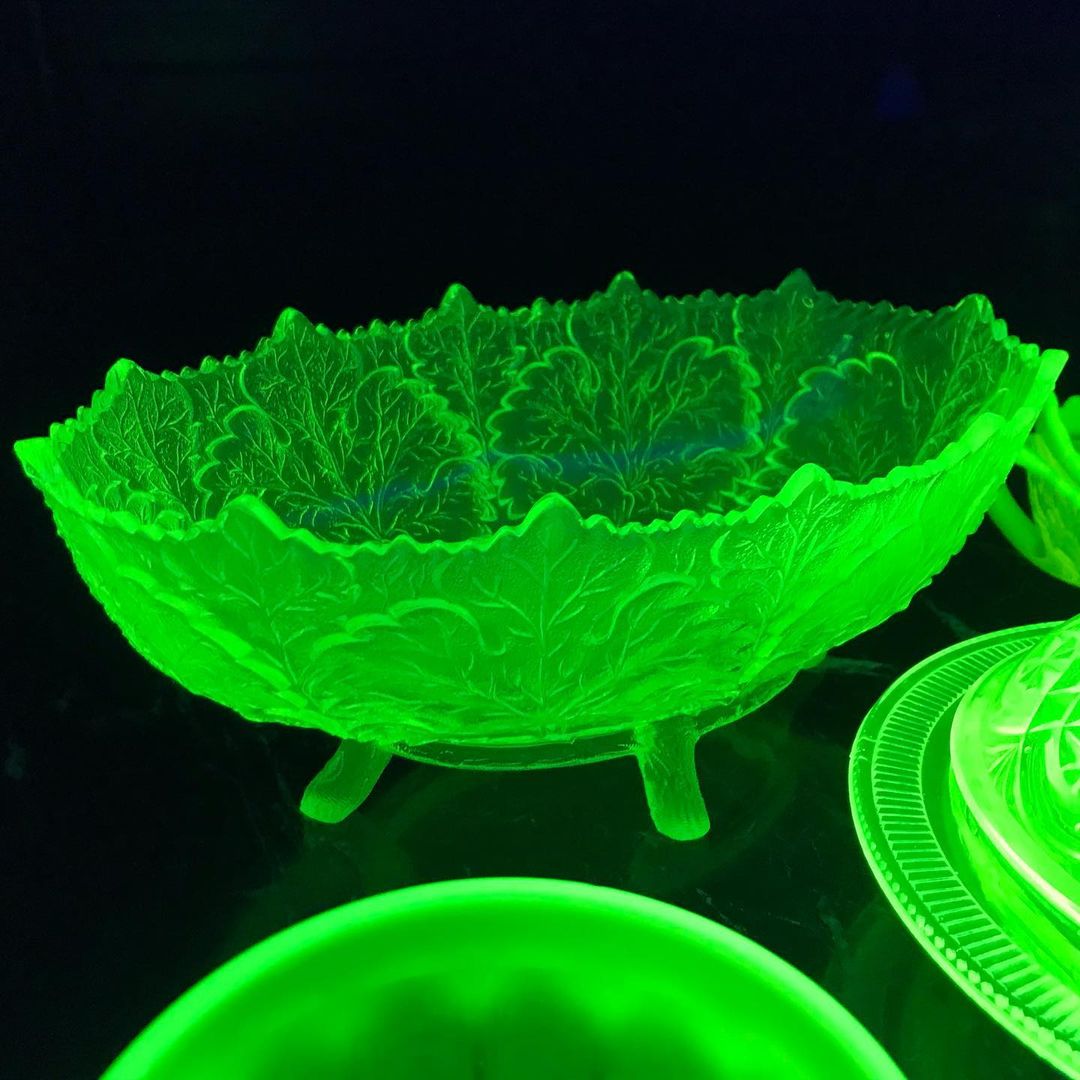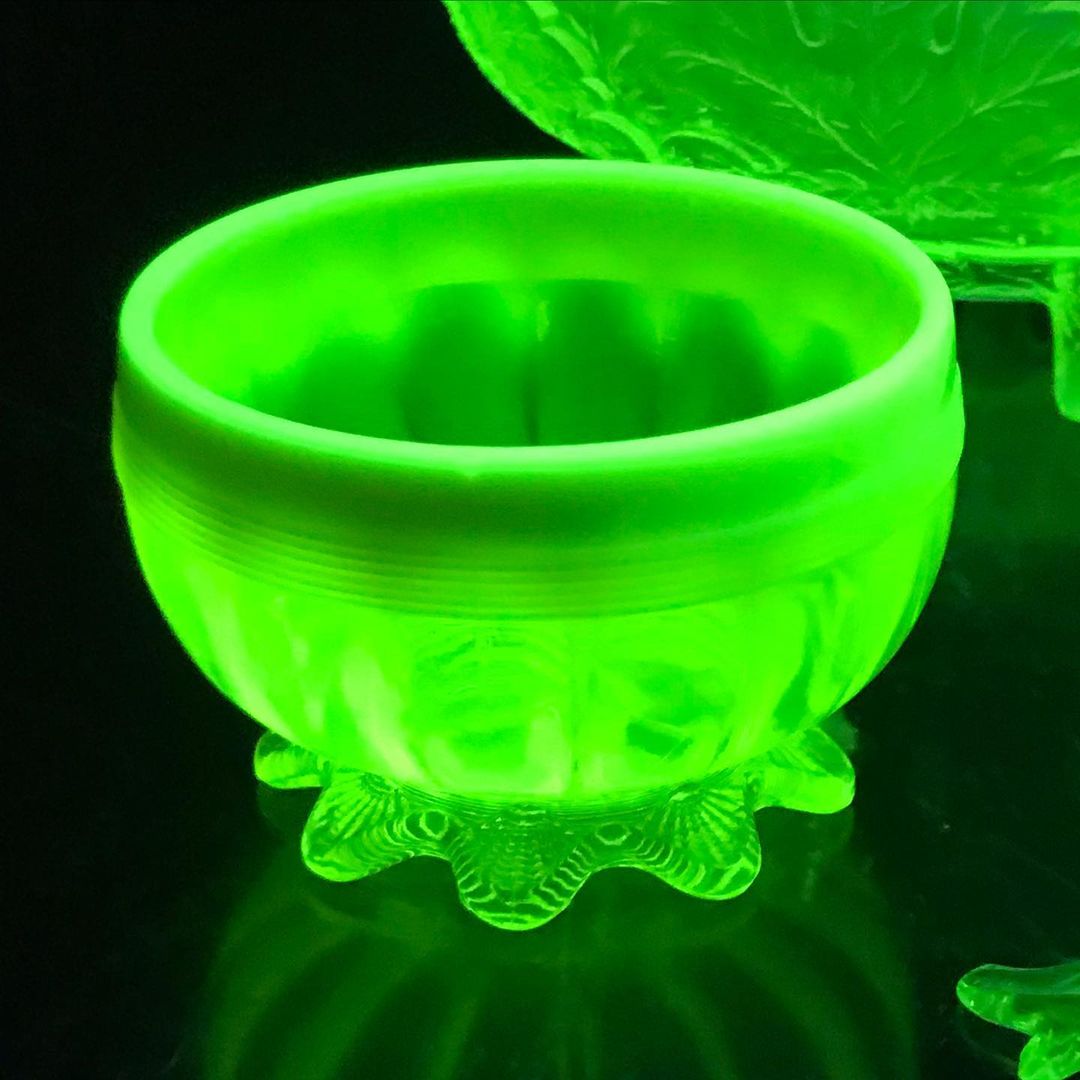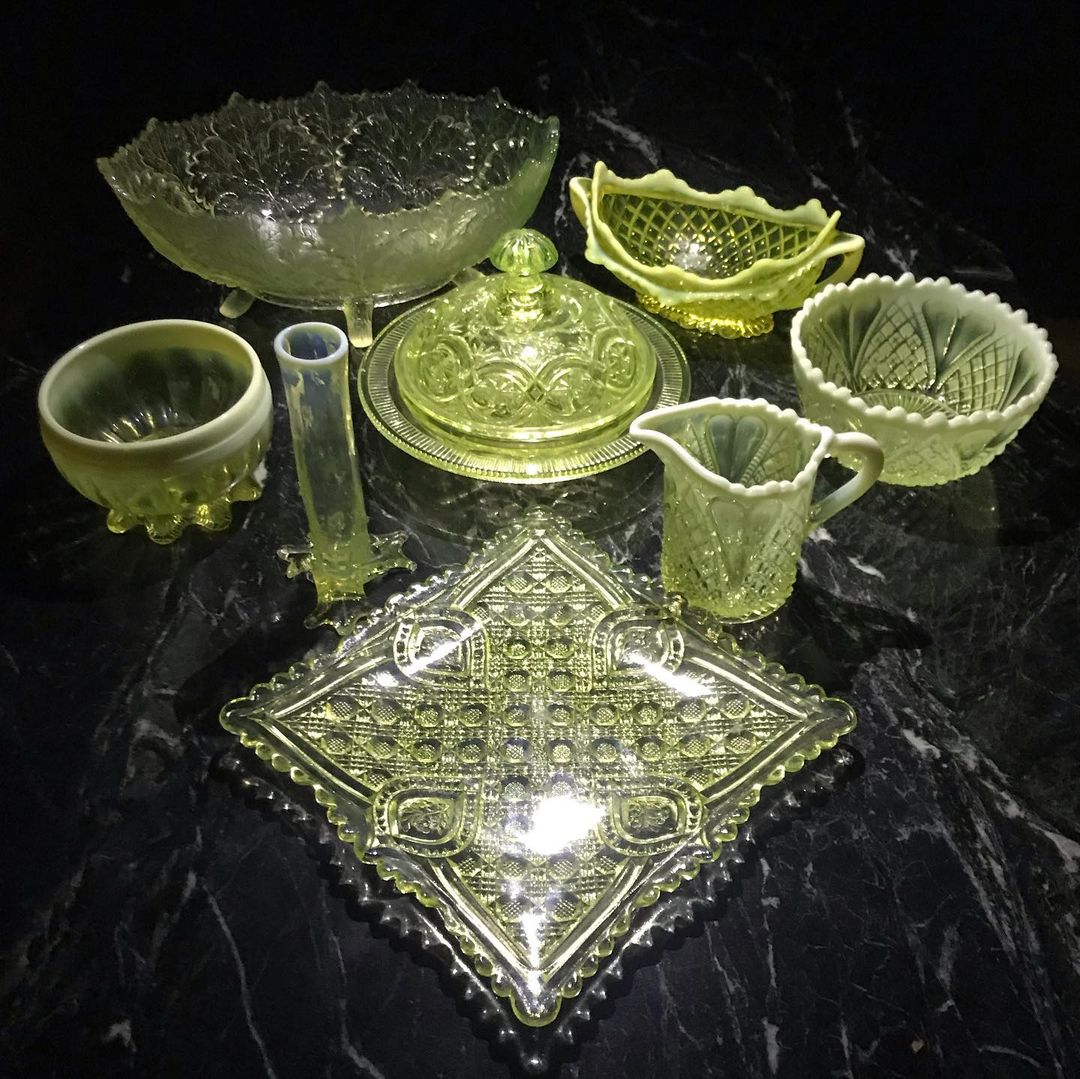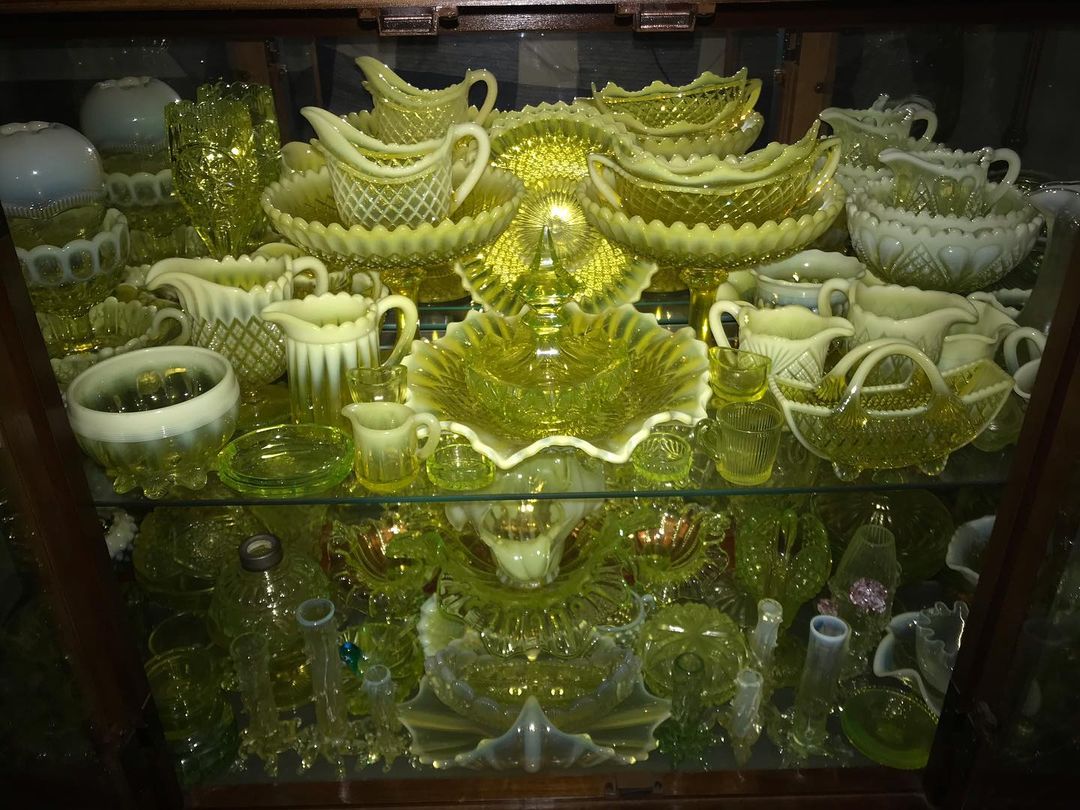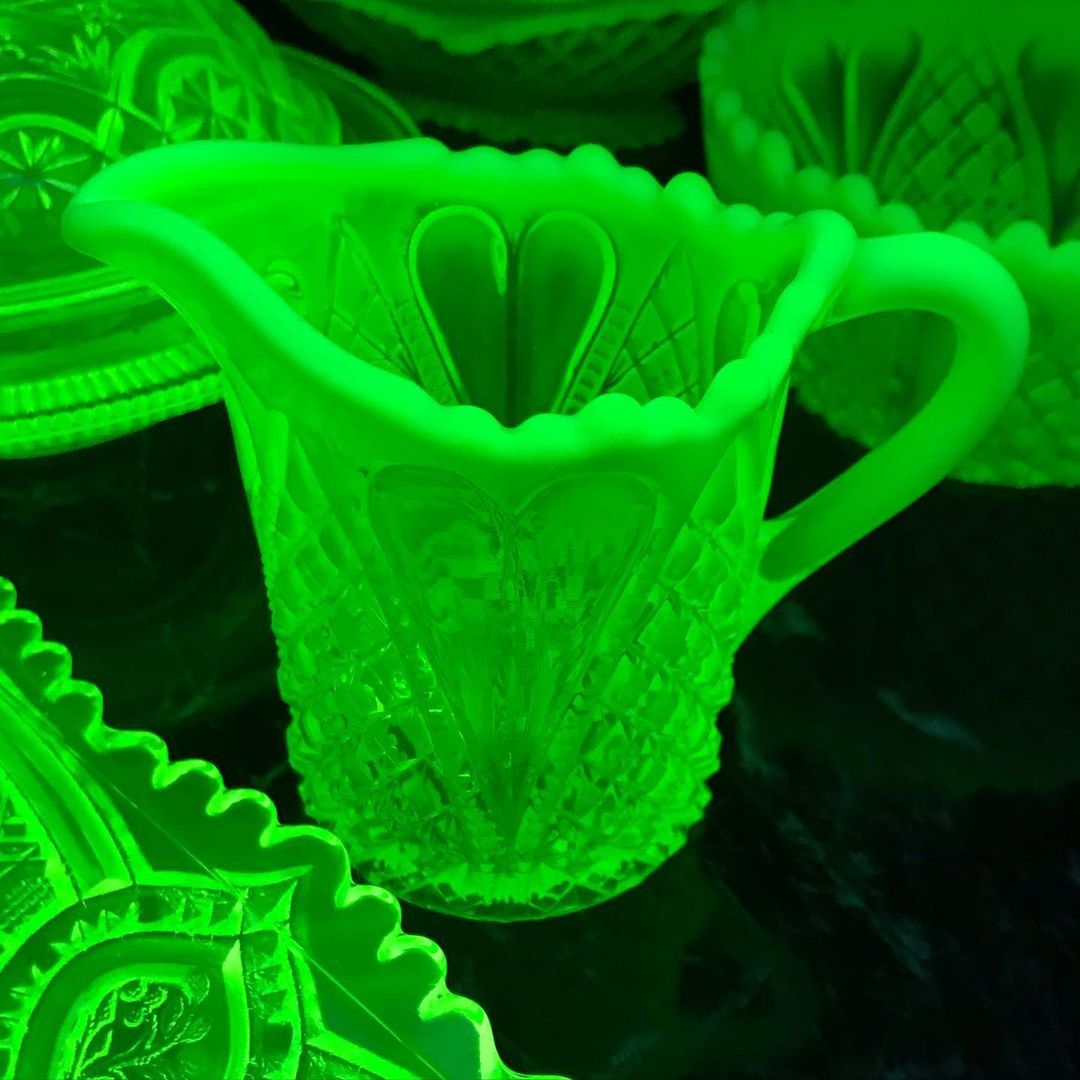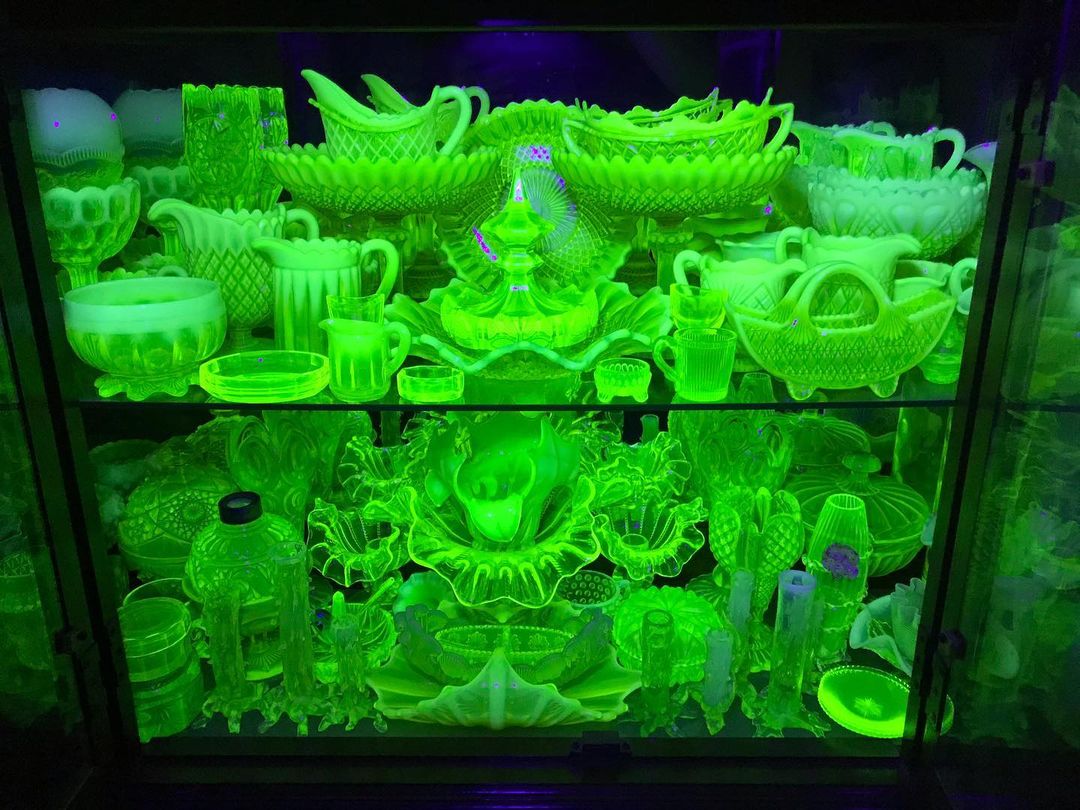Uranium Glass – Collectible Radioactive Glassware From a Bygone Era
Believe it or not, there was once a time when people exposed themselves to harmful levels of radiation to create uranium glass – detailed, fluorescent glassware that glowed a radioactive green under black light. Some antique collectors still live with them in their homes today.
h/t: odditycentral
As its name suggests, uranium glass is a special type of glass made with uranium oxide, which gives it a yellow or yellow-green tint, but also makes it radioactive and causes it to glow green under a UV black light. The proportion of uranium in this type of glass usually varies from trace levels to about 2 percent, although uranium glass made in the early twentieth century contained up to 25 percent uranium. Interestingly, the fluorescence of uranium glass is not related to its radioactivity, but is a chemical property of the uranium. In fact, uranium glass is considered generally safe to use, as long as you don’t use it constantly…
The general rule of thumb is to treat uranium glass the same as you would any type pf leaded glass. it’s safe for occasional use, but you shouldn’t actually store foods and drinks in such containers, especially if they are acidic, as these tend to leech out the uranium. Also, you shouldn’t spend more than two hours a day cleaning your collection of uranium glass, especially if the items have a large concentration of uranium.
Radioactive substances in uranium glassware are firmly bound by the glass, which significantly reduces the risk of their spreading into the environment. A uranium glass item with a content of uranium oxides of around 2 percent in emits about 100 μR / h, which makes it safe to use. It’s also worth noting that such items only emit radiation in a range of no more than 10-15 cm, so storing them in a glass case in a residence should pose no considerable health risks.

